Djibouti, a small country located in the Horn of Africa, is a land of extremes. With a harsh desert climate and rugged terrain, it is home to a variety of unique and fascinating animals that have adapted to survive in this challenging environment.
From the towering giraffes that roam the savannah to the elusive cheetahs that hunt in the rocky hills, Djibouti is a haven for wildlife enthusiasts and nature lovers alike. Despite its arid landscape, the country is also home to a surprising amount of biodiversity, with a range of plant species that thrive in the hot and dry conditions.
In this article, we will explore the natural wonders of Djibouti, from its stunning landscapes to its diverse array of flora and fauna. .
Types Of Ants In Djibouti
The Types Of Ants In Djibouti are listed here: Army Ants, Trap-Jaw Ants, Anoplolepis, Brachyponera, Carpenter And Sugar Ants, Acrobat Ants, Cryptic Ants, Razorjaw Ants, Shield Ants, Mesoponera, Trailing Pharaoh And Timid Ants, Mystrium, Crazy Ants, Trap-Jaw Ants, Crazy Ants, Plectroctena, Spiny Ants, Probolomyrmex, Fire Ants, Vampire Ants, Miniature Trap-Jaw Ants, Tapinoma, Pavement Ants.
If you’ve found some other ants in this region, contact us, and we will add them to the list!
1) Army Ants, Aenictus
Army ants are a type of ant that belong to the subfamily Dorylinae.
They are known for their aggressive behavior and their ability to form large colonies that can contain up to several million individuals.
Army ants are found in tropical and subtropical regions around the world, and they play an important role in the ecosystems where they live.
One of the most distinctive features of army ants is their nomadic lifestyle.
Unlike other ants that build permanent nests, army ants are constantly on the move, searching for food and new nesting sites.
They are also known for their impressive hunting skills.
When they come across prey, they swarm over it in large numbers, overwhelming it with their sheer numbers and powerful jaws.
Army ants are also social insects, with a complex hierarchy that determines the roles of each individual in the colony.
The queen is the largest ant in the colony and is responsible for laying eggs.
The workers are responsible for foraging, caring for the young, and defending the colony.
The soldiers are larger and have stronger jaws, which they use to protect the colony from predators.
Despite their aggressive behavior, army ants are an important part of many ecosystems.
They help to control the populations of other insects and small animals, and they provide food for larger predators such as birds and mammals.
In some cultures, army ants are even used as a source of food for humans.
Overall, army ants are fascinating creatures that have adapted to life in some of the most challenging environments on Earth.
Their nomadic lifestyle, impressive hunting skills, and complex social structure make them one of the most interesting species of ants in the world.
2) Trap-Jaw Ants, Anochetus
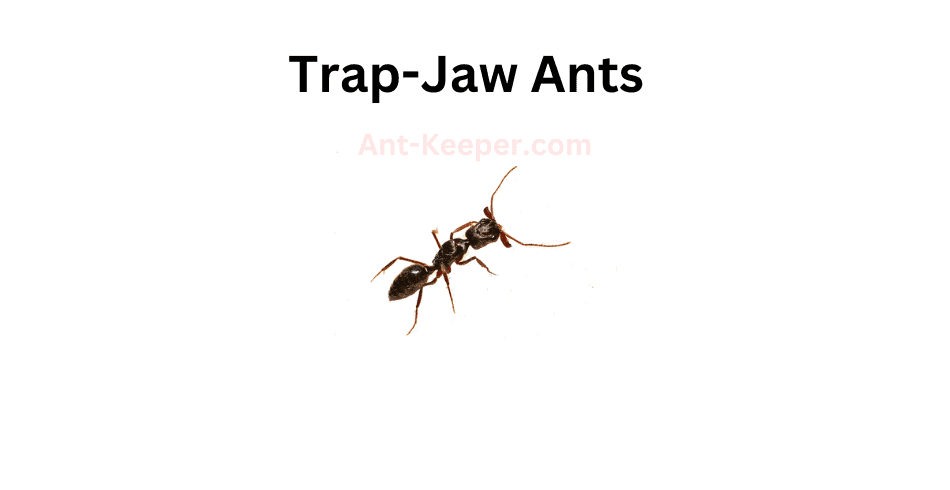
Trap-jaw ants are a species of ants that belong to the genus Odontomachus.
These ants are known for their unique and powerful mandibles, which they use to capture prey and defend their colonies.
The mandibles of trap-jaw ants are capable of closing at incredible speeds, reaching up to 140 miles per hour.
This allows them to snap their jaws shut with incredible force, which can stun or kill their prey.
Trap-jaw ants are found in a variety of habitats, including forests, grasslands, and deserts.
They are typically active during the day and are known to be highly territorial.
These ants are also known for their ability to jump, which they use to escape danger or to capture prey.
Trap-jaw ants are omnivorous, meaning that they eat both plant and animal matter.
They are known to feed on a variety of insects, including other ants, as well as nectar and other sweet substances.
These ants are also known to be scavengers, feeding on dead insects and other organic matter.
The colonies of trap-jaw ants are typically small, with only a few hundred individuals.
However, they are highly organized and have a strict social hierarchy.
The queen is the largest member of the colony and is responsible for laying eggs.
The workers, which are all female, are responsible for foraging, caring for the young, and defending the colony.
Overall, trap-jaw ants are fascinating creatures that have evolved unique adaptations to help them survive in their environments.
Their powerful mandibles and jumping abilities make them formidable predators, while their social organization allows them to work together to protect their colonies and ensure their survival.
3) Anoplolepis
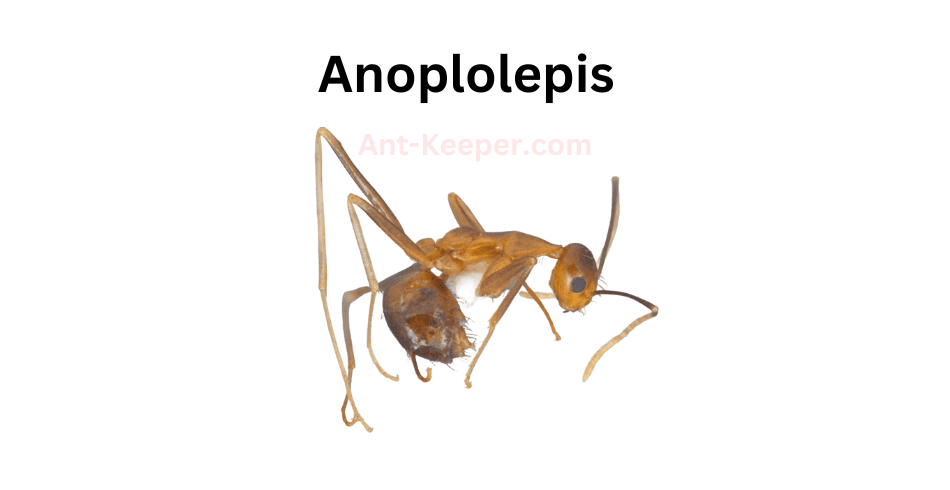
Anoplolepis is a genus of ants that belongs to the subfamily Formicinae.
The most well-known species in this genus is Anoplolepis gracilipes, commonly known as the yellow crazy ant.
These ants are known for their aggressive behavior and ability to form large colonies.
Anoplolepis ants are small in size, measuring between 2-3 mm in length.
They have a yellowish-brown coloration and a slender body shape.
Their mandibles are long and curved, which they use to capture prey and defend their colony.
These ants are omnivorous, feeding on a variety of food sources including insects, nectar, and honeydew.
They are also known to be attracted to sweet substances and can become a nuisance in households.
Anoplolepis ants are highly adaptable and can thrive in a variety of environments, including forests, grasslands, and urban areas.
They are known to form supercolonies, which can consist of millions of individuals.
These supercolonies can have a significant impact on the ecosystem, as they can displace native ant species and disrupt the balance of the food chain.
Overall, Anoplolepis ants are fascinating creatures with unique behaviors and adaptations.
While they can be a nuisance in households, they play an important role in the ecosystem and are an important subject of study for scientists.
4) Brachyponera

Brachyponera is a genus of ants belonging to the subfamily Ponerinae.
One of the species in this genus is Brachyponera sennaarensis, commonly known as the Sennaar ant.
These ants are relatively large, measuring up to 12mm in length, and are known for their aggressive behavior.
The workers of Brachyponera sennaarensis are dark brown in color and have a shiny exoskeleton.
They have a powerful sting and are known to attack other insects and even small vertebrates.
These ants are also known to forage for food in large groups, and can quickly overwhelm their prey.
Brachyponera sennaarensis is found in a variety of habitats, including forests, grasslands, and deserts.
They are known to build their nests in soil, under rocks, and in tree trunks.
These ants are also known to be nocturnal, and are most active during the night.
Despite their aggressive behavior, Brachyponera sennaarensis is an important part of the ecosystem.
They help to control the population of other insects and play a vital role in the food chain.
However, their powerful sting and aggressive behavior make them a potential danger to humans and other animals.
5) Carpenter And Sugar Ants, Camponotus

Carpenter ants and sugar ants are two common species of ants found in many regions of the world.
Carpenter ants are known for their ability to excavate wood and create nests within it.
They are typically larger in size than sugar ants and have a black or dark brown coloration.
Carpenter ants are also known for their strong mandibles, which they use to chew through wood and other materials.
Sugar ants, on the other hand, are smaller in size and have a yellow or brown coloration.
They are named for their preference for sugary foods and are often found in kitchens and other areas where food is stored.
Sugar ants are also known for their ability to form large colonies, with thousands of individual ants working together to gather food and care for their young.
Both carpenter ants and sugar ants play important roles in their ecosystems.
Carpenter ants help to break down dead wood and other plant material, which helps to recycle nutrients back into the soil.
Sugar ants help to disperse seeds and pollinate plants, which helps to maintain healthy ecosystems.
However, both species can also be pests when they invade human homes and buildings.
Carpenter ants can cause damage to wooden structures, while sugar ants can contaminate food and be a nuisance to homeowners.
It is important to take steps to prevent ant infestations and to control them if they do occur, in order to protect both human health and the health of the environment.
6) Acrobat Ants, Crematogaster

Acrobat ants, also known as Crematogaster spp., are a genus of ants that are found in various parts of the world.
These ants are known for their unique ability to contort their bodies and move in acrobatic ways, hence their name.
Acrobat ants are relatively small, with workers measuring between 2-5mm in length.
They are typically brown or black in color, with a slender body and long legs.
These ants are known for their aggressive behavior and will readily defend their nests against intruders.
One of the most interesting features of acrobat ants is their ability to use their mandibles to grip onto surfaces and contort their bodies in unusual ways.
This allows them to move along narrow branches, twigs, and other surfaces that would be difficult for other ants to navigate.
They are also able to use this ability to escape from predators, such as birds and other insects.
Acrobat ants are omnivorous, meaning that they will eat both plant and animal matter.
They are known to feed on insects, nectar, and honeydew, as well as fruits and seeds.
These ants are also known to tend to aphids, protecting them from predators in exchange for the sweet honeydew that the aphids produce.
In terms of their social structure, acrobat ants are typically organized into colonies that are led by a queen.
The queen is responsible for laying eggs, while the workers are responsible for foraging, caring for the young, and defending the nest.
Overall, acrobat ants are fascinating creatures that have adapted unique abilities to survive in their environments.
Their acrobatic abilities and aggressive behavior make them a formidable force in the insect world.
7) Cryptic Ants, Cryptopone

Cryptic ants are a species of ants that are known for their ability to blend in with their surroundings.
They are typically small in size, measuring only a few millimeters in length, and have a dark brown or black coloration that helps them to remain inconspicuous.
One of the most interesting features of cryptic ants is their ability to mimic the appearance of other insects.
For example, some species of cryptic ants have been observed mimicking the appearance of spiders, which helps them to avoid detection by predators that might otherwise prey on them.
Cryptic ants are also known for their highly social behavior.
They live in large colonies that can contain thousands of individuals, and they work together to gather food, care for their young, and defend their territory from other ants and predators.
Despite their small size, cryptic ants play an important role in their ecosystem.
They help to aerate the soil, control pest populations, and provide food for other animals.
In addition, they are an important food source for many birds and other predators.
Overall, cryptic ants are a fascinating species of ants that have evolved a number of unique adaptations to help them survive in their environment.
Their ability to blend in with their surroundings and mimic other insects is just one example of the many ways in which they have adapted to their surroundings over time.
8) Razorjaw Ants, Leptogenys

The Razorjaw Ant, also known as the Pachycondyla villosa, is a species of ant belonging to the subfamily Ponerinae.
These ants are known for their sharp mandibles, which are used for hunting and defense.
The workers of this species are typically around 8-10mm in length, while the queen can reach up to 15mm.
Razorjaw Ants are found in a variety of habitats, including forests, grasslands, and deserts.
They are known to be aggressive predators, feeding on a variety of insects and other arthropods.
These ants are also known to scavenge for food, and will even attack and kill other ant species to steal their food.
The nests of Razorjaw Ants are typically found in soil or leaf litter, and can be quite large.
The queen is responsible for laying eggs, and the workers are responsible for caring for the brood and maintaining the nest.
These ants are also known for their ability to defend their nest, and will aggressively attack any intruders.
Overall, the Razorjaw Ant is a fascinating species of ant known for its sharp mandibles, aggressive behavior, and impressive hunting skills.
9) Shield Ants, Meranoplus

Shield ants, also known as turtle ants, are a species of ant that belong to the genus Cephalotes.
They are found in tropical regions and are known for their unique physical characteristics.
One of the most distinctive features of shield ants is their flattened, disc-shaped head.
This head shape allows them to block the entrance to their nests, protecting them from predators and other threats.
In addition, shield ants have long, spindly legs that allow them to move quickly and easily through the forest canopy.
Shield ants are social insects and live in large colonies.
They are known for their complex communication systems, which involve chemical signals and physical gestures.
They also have a division of labor within their colonies, with different ants taking on different roles such as foraging, nest building, and caring for the young.
One interesting behavior of shield ants is their use of "backpacks." Some worker ants will carry small pieces of leaves or other materials on their backs as they move through the forest.
It is believed that these backpacks may serve as camouflage or protection from predators.
Overall, shield ants are a fascinating species of ant with unique physical and behavioral adaptations that allow them to thrive in their tropical habitats.
10) Mesoponera
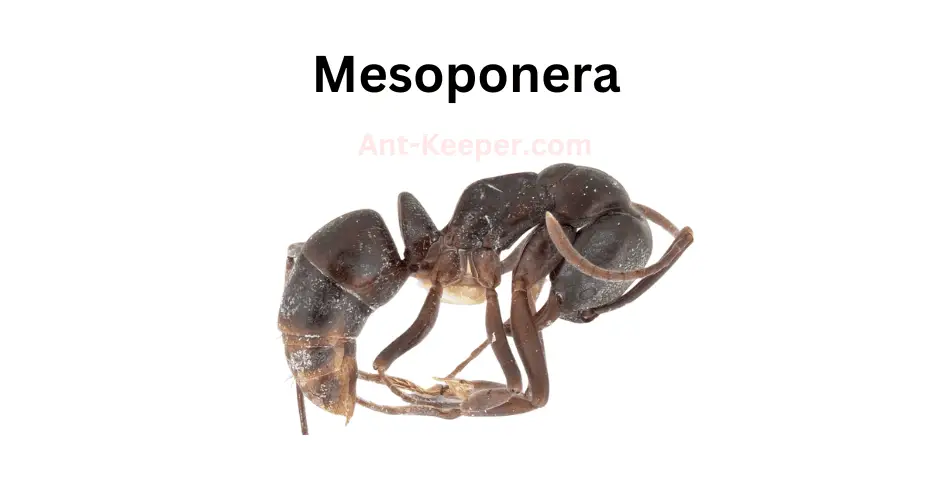
Mesoponera is a genus of ants belonging to the subfamily Ponerinae.
The species Mesoponera beccarii is a medium-sized ant with a dark brown to black coloration.
They are known for their aggressive behavior and are often found in forested areas.
Mesoponera beccarii is a solitary ant that lives in underground nests.
They are active during the day and forage for food on the forest floor.
Their diet consists of insects, spiders, and other small invertebrates.
The queen of Mesoponera beccarii is larger than the workers and is responsible for laying eggs.
The workers are responsible for caring for the brood, foraging for food, and defending the nest.
Mesoponera beccarii has a painful sting and is known to be aggressive towards intruders.
They are also known to engage in battles with other ant species over territory and resources.
Overall, Mesoponera beccarii is an interesting and important species in the ecosystem.
Their aggressive behavior and role in controlling insect populations make them an important part of the forest ecosystem.
11) Trailing Pharaoh And Timid Ants, Monomorium

The Trailing Pharaoh ant, also known as the Monomorium pharaonis, is a small, reddish-brown ant species that is commonly found in urban areas.
These ants are known for their ability to form large colonies, which can consist of thousands of individuals.
One interesting behavior of the Trailing Pharaoh ant is their tendency to trail behind other ants.
This behavior is thought to be a form of communication, as the trailing ants are able to follow the scent trail left by the leading ants.
This behavior is also used to locate food sources, as the trailing ants are able to follow the trail to the source of the food.
In contrast to the bold behavior of the Trailing Pharaoh ant, the Timid ant, also known as the Temnothorax species, is a much more cautious species.
These ants are small and brown, and are often found in wooded areas.
They are known for their timid behavior, and will often retreat into their nests when threatened.
Despite their timid nature, the Timid ant is still able to form large colonies.
They are also known for their ability to adapt to changing environments, and can be found in a variety of habitats, including forests, meadows, and even urban areas.
Overall, both the Trailing Pharaoh ant and the Timid ant are fascinating species that demonstrate unique behaviors and adaptations.
By studying these ants, scientists can gain a better understanding of the complex social behaviors and ecological roles of ants in their respective environments.
12) Mystrium
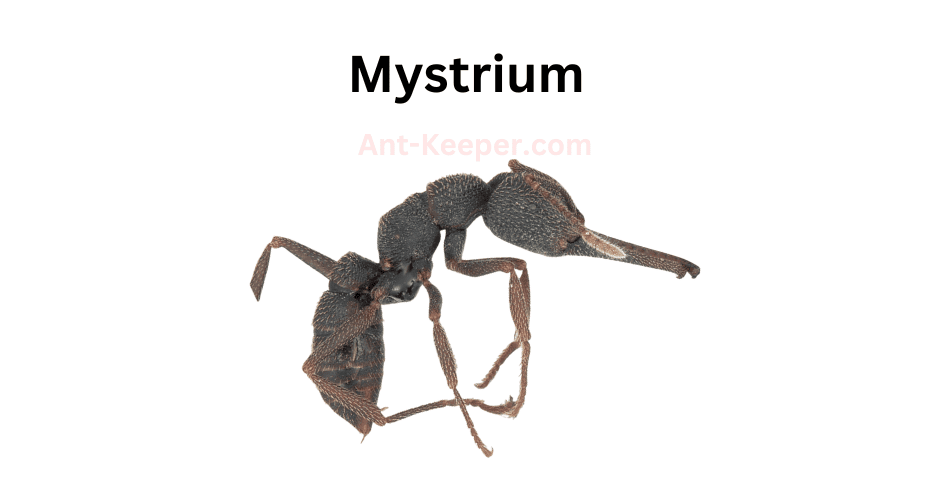
Mystrium is a genus of ants that belongs to the family Formicidae.
These ants are known for their unique morphology and behavior.
They are medium-sized ants, with workers ranging from 3 to 6 mm in length.
The head of the ant is elongated and narrow, with large mandibles that are used for hunting and defense.
The antennae are long and slender, with 12 segments.
Mystrium ants are found in a variety of habitats, including forests, grasslands, and deserts.
They are known for their aggressive behavior and are often seen attacking other ant species.
They are also known to be solitary hunters, with workers often hunting alone or in small groups.
One of the most interesting aspects of Mystrium ants is their reproductive behavior.
Unlike most ants, Mystrium ants have a unique reproductive system where the queen produces both male and female offspring.
This is known as haplodiploidy, where males are haploid and females are diploid.
The males are produced from unfertilized eggs, while the females are produced from fertilized eggs.
Mystrium ants are also known for their ability to communicate with each other through chemical signals.
They use pheromones to mark trails, identify nestmates, and signal danger.
They also use sound to communicate, with workers producing a high-pitched sound when they encounter a threat.
Overall, Mystrium ants are fascinating creatures that have unique morphology, behavior, and reproductive systems.
They play an important role in their ecosystems and are a valuable subject of study for scientists.
13) Crazy Ants, Nylanderia
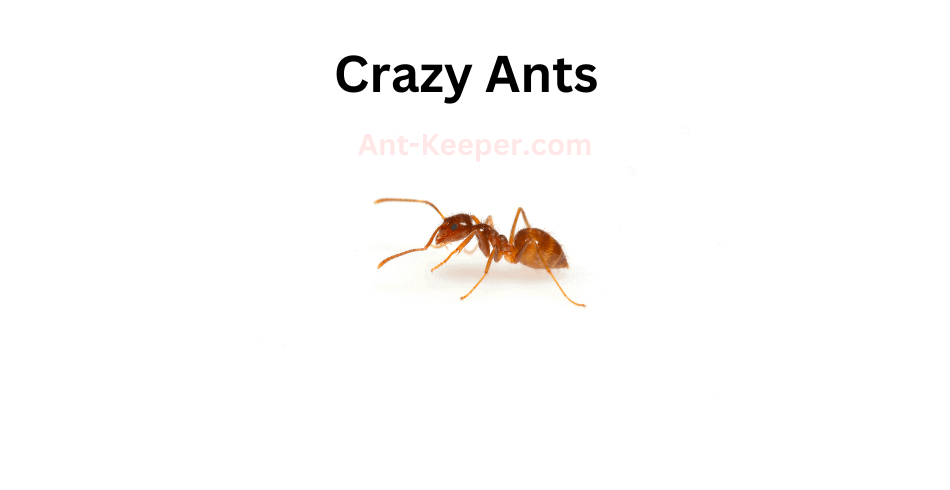
Crazy ants, also known as Nylanderia fulva, are a species of ant that belong to the family Formicidae.
They are small in size, measuring only about 2.2 to 3 mm in length, and are reddish-brown in color.
These ants are known for their erratic and unpredictable behavior, hence the name "crazy ants."
Crazy ants are native to South America, but have since spread to other parts of the world, including North America, Asia, and Australia.
They are highly adaptable and can thrive in a variety of environments, including urban areas, forests, and grasslands.
One of the most notable characteristics of crazy ants is their ability to form large colonies with multiple queens.
This allows them to quickly establish themselves in new areas and outcompete other ant species.
Crazy ants are also known for their aggressive behavior towards other insects and animals, including humans.
In addition to their aggressive behavior, crazy ants are also known for their ability to cause damage to electrical equipment.
They are attracted to electrical currents and can easily short-circuit electronics, causing damage and potentially starting fires.
Despite their small size, crazy ants are a formidable species that can have a significant impact on their environment.
As they continue to spread to new areas, it is important to monitor their behavior and take steps to control their populations in order to minimize their impact on ecosystems and human infrastructure.
14) Trap-Jaw Ants, Odontomachus

Trap-jaw ants are a species of ants that belong to the genus Odontomachus.
These ants are known for their unique and powerful mandibles, which they use to capture prey and defend their colonies.
The mandibles of trap-jaw ants are capable of closing at incredible speeds, reaching up to 140 miles per hour.
This allows them to snap their jaws shut with incredible force, which can stun or kill their prey.
Trap-jaw ants are found in a variety of habitats, including forests, grasslands, and deserts.
They are typically active during the day and are known to be highly territorial.
These ants are also known for their ability to jump, which they use to escape danger or to capture prey.
Trap-jaw ants are omnivorous, meaning that they eat both plant and animal matter.
They are known to feed on a variety of insects, including other ants, as well as nectar and other sweet substances.
These ants are also known to be scavengers, feeding on dead insects and other organic matter.
The colonies of trap-jaw ants are typically small, with only a few hundred individuals.
However, they are highly organized and have a strict social hierarchy.
The queen is the largest member of the colony and is responsible for laying eggs.
The workers, which are all female, are responsible for foraging, caring for the young, and defending the colony.
Overall, trap-jaw ants are fascinating creatures that have evolved unique adaptations to help them survive in their environments.
Their powerful mandibles and jumping abilities make them formidable predators, while their social organization allows them to work together to protect their colonies and ensure their survival.
15) Crazy Ants, Paratrechina

Crazy ants, also known as Nylanderia fulva, are a species of ant that belong to the family Formicidae.
They are small in size, measuring only about 2.2 to 3 mm in length, and are reddish-brown in color.
These ants are known for their erratic and unpredictable behavior, hence the name "crazy ants."
Crazy ants are native to South America, but have since spread to other parts of the world, including North America, Asia, and Australia.
They are highly adaptable and can thrive in a variety of environments, including urban areas, forests, and grasslands.
One of the most notable characteristics of crazy ants is their ability to form large colonies with multiple queens.
This allows them to quickly establish themselves in new areas and outcompete other ant species.
Crazy ants are also known for their aggressive behavior towards other insects and animals, including humans.
In addition to their aggressive behavior, crazy ants are also known for their ability to cause damage to electrical equipment.
They are attracted to electrical currents and can easily short-circuit electronics, causing damage and potentially starting fires.
Despite their small size, crazy ants are a formidable species that can have a significant impact on their environment.
As they continue to spread to new areas, it is important to monitor their behavior and take steps to control their populations in order to minimize their impact on ecosystems and human infrastructure.
16) Plectroctena
Plectroctenabe is a species of ant that belongs to the Formicidae family.
These ants are known for their unique physical characteristics, including their elongated mandibles and spiny exoskeletons.
Plectroctenabe ants are typically found in forested areas, where they build their nests in soil or leaf litter.
These ants are known for their aggressive behavior and are often seen engaging in territorial disputes with other ant species.
Plectroctenabe ants are also known to be omnivorous, feeding on a variety of insects, fruits, and seeds.
One interesting aspect of Plectroctenabe ants is their reproductive strategy.
These ants have a unique system of reproduction called haplodiploidy, where females are diploid and males are haploid.
This means that females have two sets of chromosomes, while males only have one.
This system allows for a high degree of genetic diversity within the colony.
Overall, Plectroctenabe ants are fascinating creatures with unique physical and behavioral characteristics.
Their aggressive behavior and reproductive strategy make them an important species to study in the field of entomology.
17) Spiny Ants, Polyrhachis
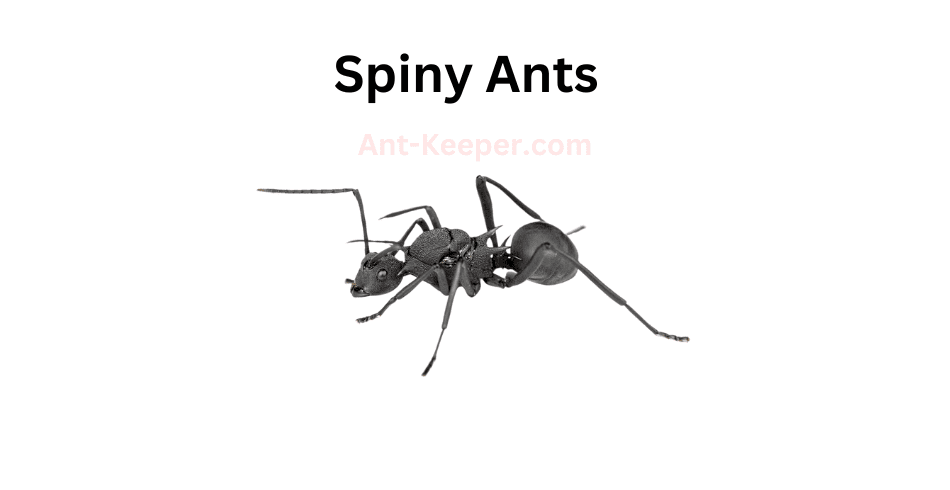
Spiny ants, also known as Polyrhachis sp., are a species of ants that belong to the family Formicidae.
These ants are known for their unique appearance, with spines covering their bodies that serve as a form of protection against predators.
Spiny ants are typically black or dark brown in color and range in size from 4 to 10 millimeters in length.
They are found in a variety of habitats, including forests, grasslands, and urban areas.
These ants are known for their aggressive behavior and will defend their nests fiercely.
Spiny ants are omnivores, feeding on a variety of food sources including insects, nectar, and honeydew.
They are also known to tend to aphids, protecting them from predators in exchange for the sweet honeydew they produce.
These ants are social insects, living in colonies that can range in size from a few dozen to several thousand individuals.
The colony is typically led by a queen ant, who is responsible for laying eggs and maintaining the colony's population.
Spiny ants play an important role in their ecosystems, serving as both predators and prey.
They help to control the populations of other insects and provide food for larger animals such as birds and reptiles.
Overall, spiny ants are a fascinating species of ants that are known for their unique appearance and aggressive behavior.
They play an important role in their ecosystems and are an important part of the natural world.
18) Probolomyrmex
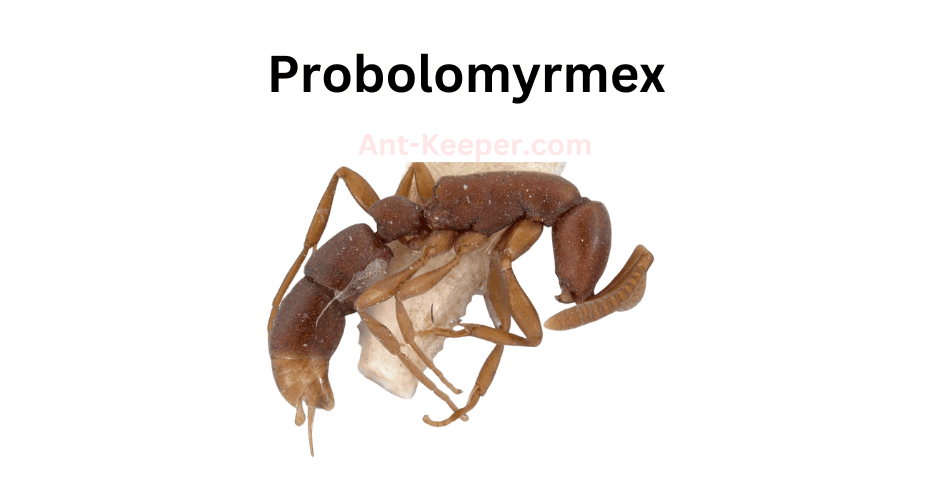
Probolomyrmex is a genus of ants that belongs to the subfamily Proceratiinae.
These ants are known for their unique morphology, which includes a long and slender body, a narrow head, and elongated mandibles.
The genus is characterized by the presence of a distinct petiole, which separates the thorax and the abdomen.
Probolomyrmex ants are typically found in tropical and subtropical regions, where they inhabit a variety of habitats, including forests, grasslands, and deserts.
They are known to be highly aggressive and territorial, often engaging in fierce battles with other ant species.
One of the most interesting aspects of Probolomyrmex ants is their social behavior.
These ants are known to be highly organized, with a well-defined caste system that includes workers, soldiers, and reproductive individuals.
The workers are responsible for foraging, nest maintenance, and caring for the young, while the soldiers defend the colony against predators and other threats.
Despite their small size, Probolomyrmex ants play an important role in their ecosystem.
They are known to be efficient predators, feeding on a variety of insects and other small invertebrates.
They also help to aerate the soil and distribute nutrients, which can have a positive impact on plant growth.
Overall, Probolomyrmex ants are a fascinating and important group of insects that are worthy of further study and conservation efforts.
19) Fire Ants, Solenopsis
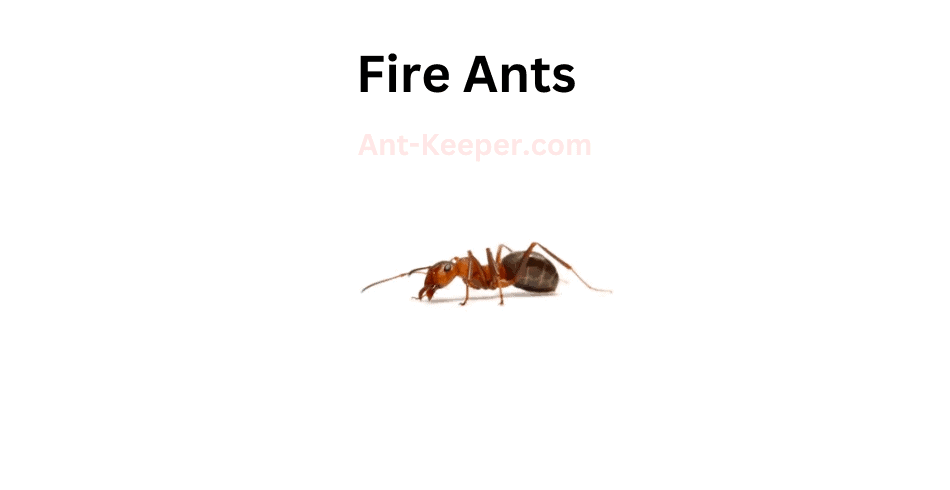
Fire ants are a type of ant that belongs to the Solenopsis genus.
They are known for their reddish-brown color and their aggressive behavior.
Fire ants are social insects that live in colonies, which can range in size from a few hundred to several thousand individuals.
Fire ants are omnivorous and feed on a variety of foods, including insects, seeds, and other small animals.
They are also known to scavenge for food and will often invade other ant colonies to steal their resources.
One of the most distinctive features of fire ants is their ability to sting.
They have a stinger located at the end of their abdomen, which they use to inject venom into their prey or enemies.
Fire ant stings can be painful and can cause an allergic reaction in some people.
Fire ants are also known for their ability to build large mounds, which can reach heights of up to 18 inches.
These mounds are made of soil and are used as a nesting site for the colony.
Fire ants are considered to be an invasive species in many parts of the world, as they can cause damage to crops and wildlife.
They are also a nuisance to humans, as their stings can be painful and their mounds can be unsightly.
Overall, fire ants are fascinating insects that have adapted to thrive in a variety of environments.
While they can be a nuisance, they are an important part of the ecosystem and play a vital role in controlling insect populations.
20) Vampire Ants, Stigmatomma
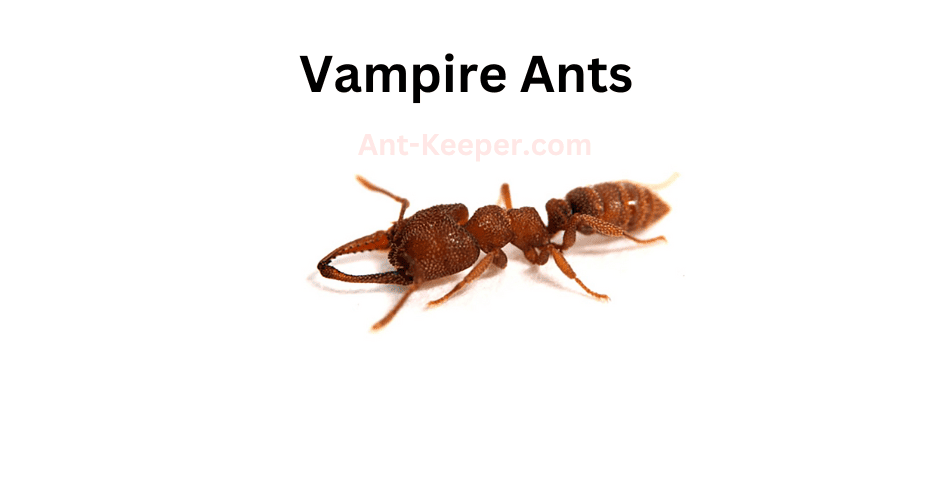
Vampire ants, also known as blood-sucking ants, are a species of ants that feed on the blood of other insects.
These ants are known for their unique feeding behavior, which involves biting into the exoskeleton of their prey and then sucking out their blood.
Vampire ants are typically found in tropical and subtropical regions, where they live in colonies of up to several thousand individuals.
They are known for their aggressive behavior and will attack other insects, including larger prey such as grasshoppers and caterpillars.
One of the most interesting aspects of vampire ants is their ability to adapt to their environment.
In some cases, these ants have been known to feed on the blood of their own colony members when other sources of food are scarce.
Vampire ants are also known for their unique physical characteristics.
They have long, curved mandibles that are used to bite into the exoskeleton of their prey.
They also have specialized mouthparts that allow them to suck out the blood of their victims.
Despite their aggressive behavior and blood-sucking tendencies, vampire ants play an important role in their ecosystem.
They help to control the populations of other insects and contribute to the overall balance of their environment.
Overall, vampire ants are a fascinating species of ants that have adapted to their environment in unique and interesting ways.
Their behavior and physical characteristics make them a subject of interest for scientists and nature enthusiasts alike.
21) Miniature Trap-Jaw Ants, Strumigenys
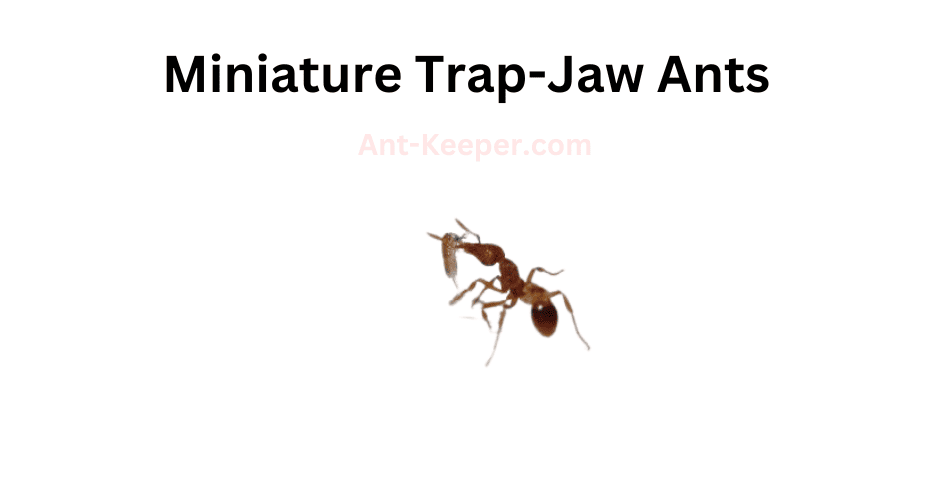
The Miniature Trap-Jaw Ants, scientifically known as Odontomachus sp., are a species of ants that belong to the family Formicidae.
These ants are known for their unique and powerful mandibles, which they use to capture prey and defend their colonies.
The Miniature Trap-Jaw Ants are relatively small in size, measuring only a few millimeters in length.
They have a dark brown or black coloration and a slender body shape.
Their most distinctive feature is their mandibles, which are elongated and can snap shut with incredible force.
These mandibles are used to capture prey, crush seeds, and defend the colony against predators.
The Miniature Trap-Jaw Ants are found in a variety of habitats, including forests, grasslands, and deserts.
They are known to be active during the day and are often seen foraging for food.
These ants are omnivorous and feed on a variety of food sources, including insects, nectar, and seeds.
The Miniature Trap-Jaw Ants are social insects and live in colonies that can range in size from a few dozen to several thousand individuals.
The colony is typically led by a queen, who is responsible for laying eggs and maintaining the colony's population.
The workers are responsible for foraging, caring for the young, and defending the colony.
Overall, the Miniature Trap-Jaw Ants are fascinating insects that have evolved unique adaptations to survive in their environment.
Their powerful mandibles and social behavior make them an important part of many ecosystems.
22) Tapinoma
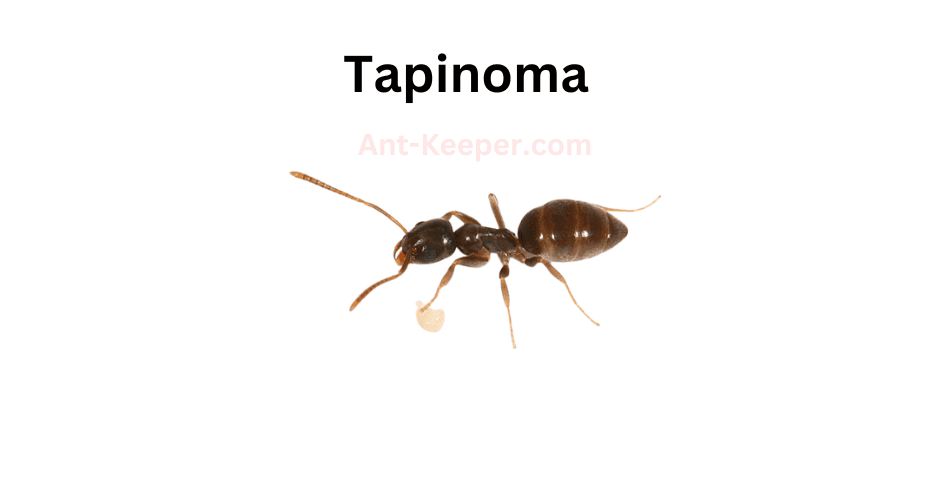
Tapinoma is a genus of ants that belongs to the family Formicidae.
The species Tapinoma is a small ant that measures about 2-3 mm in length.
They are commonly found in urban and suburban areas, and are known to invade homes and buildings in search of food and shelter.
Tapinoma ants are light brown in color and have a slender body with long legs.
They have a distinctively shaped head that is wider than their thorax, and they possess a pair of antennae that are bent at a right angle.
These ants are known for their ability to form large colonies, which can consist of thousands of individuals.
Tapinoma ants are omnivorous and feed on a variety of food sources, including insects, nectar, and honeydew.
They are also known to scavenge for food in garbage cans and other waste areas.
These ants are attracted to sweet and sugary substances, and will often invade kitchens and pantries in search of food.
Tapinoma ants are not known to be aggressive towards humans, but they can become a nuisance when they invade homes and buildings.
They are known to build their nests in wall voids, under floors, and in other hidden areas.
If left unchecked, these ants can cause damage to structures and can contaminate food sources.
Overall, Tapinoma ants are a common pest in many parts of the world.
While they are not harmful to humans, they can be a nuisance when they invade homes and buildings.
Proper pest control measures can help to prevent infestations and keep these ants at bay.
23) Pavement Ants, Tetramorium
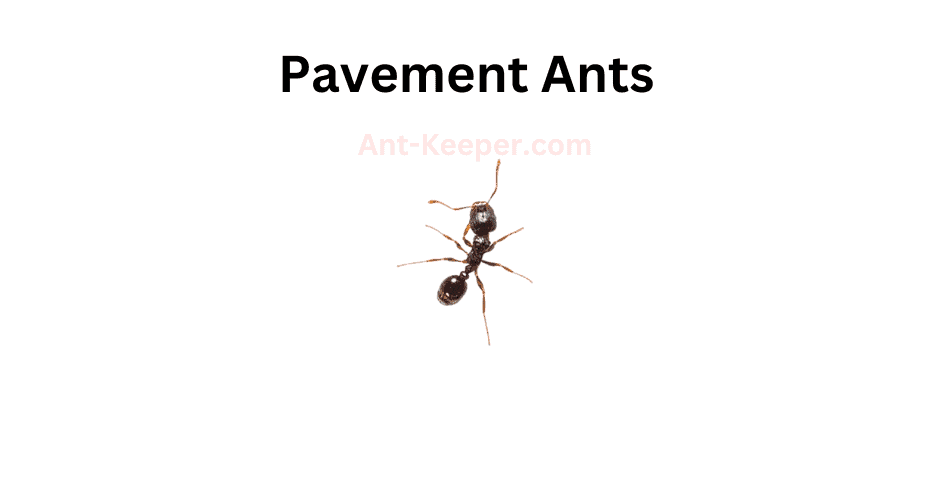
Pavement ants, also known as Tetramorium caespitum, are a species of ant that belong to the family Formicidae.
These ants are commonly found in urban and suburban areas, where they build their nests in cracks and crevices in pavement, sidewalks, and buildings.
Pavement ants are small in size, measuring between 2.5 to 4 mm in length.
They are typically dark brown or black in color, with lighter colored legs and antennae.
These ants are known for their aggressive behavior and will defend their nests fiercely against intruders.
Pavement ants are omnivorous, feeding on a variety of foods including insects, seeds, and sweet substances such as honeydew and nectar.
They are also known to scavenge for food in garbage cans and other waste areas.
Pavement ants are social insects, living in colonies that can range in size from a few hundred to several thousand individuals.
The colony is typically led by a queen ant, who is responsible for laying eggs and maintaining the colony.
Pavement ants are considered a nuisance pest, as they can invade homes and buildings in search of food and shelter.
They are also known to cause damage to pavement and other structures by excavating soil and creating tunnels.
Overall, pavement ants are a common and adaptable species of ant that play an important role in urban ecosystems.
While they may be a nuisance to humans, they are an important food source for many other animals and help to maintain the balance of the ecosystem.
Check Out Some Of Our Other Ants By Location Posts
| Types Of Ants In Veracruz, Mexico | Veracruz, located in the eastern part of Mexico, is a region that boasts a diverse and unique environment. With its tropical climate, Veracruz is home ... |
| Types Of Ants In Yukon Territory, Canada | The Yukon Territory is a vast and rugged region located in northwestern Canada. It is bordered by Alaska to the west, the Northwest Territories to ... |
| Types Of Ants In Sergipe, Brazil | Sergipe, a state located in the northeastern region of Brazil, is a land of diverse ecosystems and unique wildlife. With a tropical climate, the region ... |
| Types Of Ants In Dominica | Dominica, located in the eastern Caribbean region, is a small island nation known for its lush rainforests, pristine beaches, and diverse wildlife. The island’s tropical ... |
| Types Of Ants In Campeche, Mexico | Campeche, a state located in the southeastern region of Mexico, is a land of diverse ecosystems and natural wonders. The region boasts a tropical climate ... |

